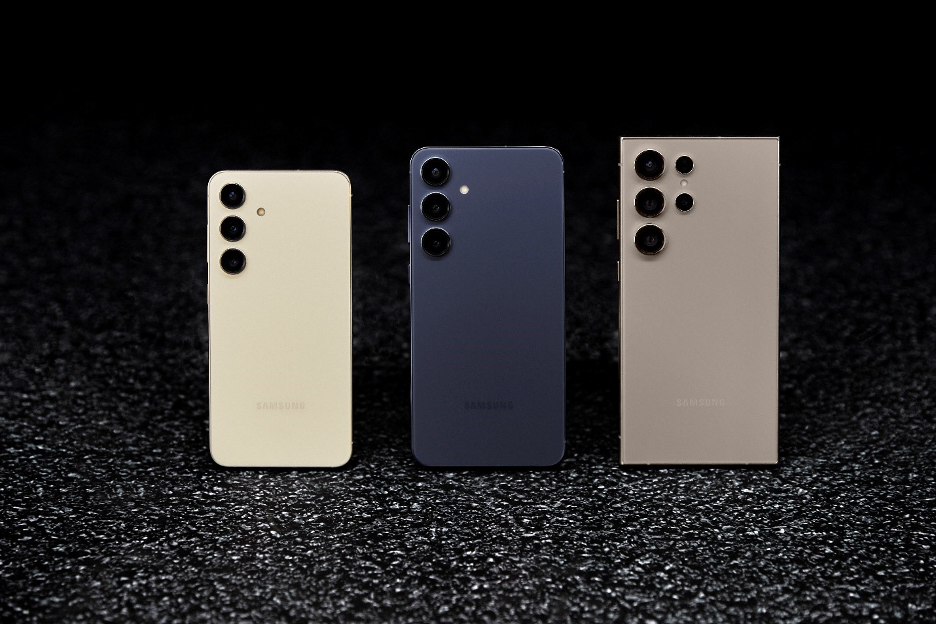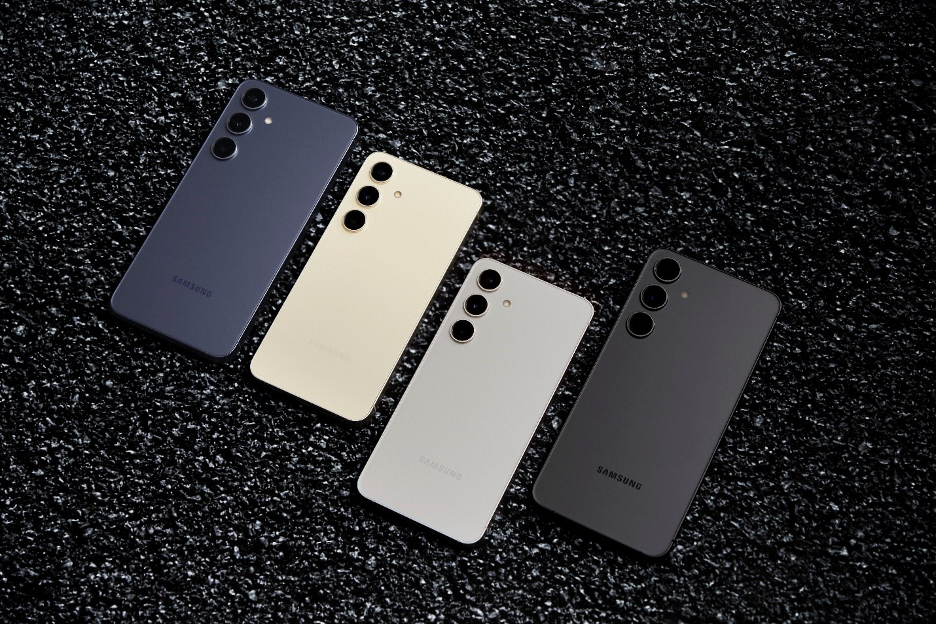
If last year was all about AI hype, this year is all about practical applications of AI. Quickly following the AI-fest that was CES 2024 (where Samsung announced new PCs), the Samsung Galaxy Unpacked event reflects that Samsung is all-in on AI as well, as shown by its introduction of Galaxy AI—Samsung’s suite of AI features and capabilities for Samsung Galaxy phones.
While Galaxy AI is an obvious focal point for what Samsung is doing differently this year with the Galaxy S24 line, there are still more changes to consider. In particular, the premium Ultra model is set apart from the rest of the S24 line once again. The S24s will obviously be compared directly to Apple’s iPhone 15 (I have a 15 Pro Max myself) as well as other Android competitors. One thing to consider, however, is that in the U.S. market there really aren’t many meaningful Android competitors for Samsung.
Galaxy AI
Since Galaxy AI is at the core of the new S24 family and is the most consistent thing across all three models, it makes sense to start with it. The S24 series ships with AI features including Live Translate, Interpreter, Chat Assist, Note and Transcript Assist, and Circle to Search. These are clearly communication-focused, but they are also the most tried and true forms of AI acceleration that exist today. Additionally, many of these features leverage on-device AI capabilities and don’t require an internet connection to work, which enhances performance and privacy.
Samsung is also injecting Galaxy AI into these phones’ photo-editing tools with features such as Edit Suggestion or Generative Edit to speed up the editing process. The video editor even has a new feature called Instant Slow-Mo which uses AI to generate frames based on movement to turn any video into a slow-motion video. Samsung is using ProVisual Engine as the branding on its AI-enabled cameras. These AI capabilities have been around for a while because smartphone cameras had some of the earliest AI applications to appear on mobile devices. In fact, smartphones have been using machine learning and AI in photography for so long that those capabilities pre-date any NPU or dedicated AI accelerator in any phone. In the past, many AI workloads ran on the GPU, which was powerful but inefficient; now we have dedicated NPUs specifically for AI applications, including photography.
Circle to Search is one of my favorite and simplest features built by Samsung with Google. I really like how it enhances the search experience but also allows the user to be more creative with how they look things up and gives them more granularity. Google’s image search is powerful, and being able to take advantage of that in virtually any scenario is a great benefit.
I believe that Galaxy AI will evolve considerably with time and that we will likely see these devices evolve as well, adding features that they didn’t initially ship with. This is something I’ve seen happen with other AI-driven products like Meta’s Quest line of headsets, where the product gains features and gets better with time. So, naturally I’m not surprised that today Galaxy AI mostly goes after the lowest-hanging fruit in terms of AI applications.
Galaxy S24 Specs — Processors, Storage, Displays, and Wi-Fi
While Galaxy AI is a constant across the entire S24 series, there are some hardware variations among the Galaxy S24, 24+, and 24 Ultra—but all of them run Galaxy AI. This means that even though there may be some processor differences based on model or geography, the user will still be able to experience the same Galaxy AI features across all devices. Samsung is going back to its old pattern of shipping Exynos processors (specifically the Exynos 2400) for the S24 and S24+ outside the U.S., while the Ultra still gets the higher-performing Qualcomm Snapdragon 8 Gen 3 across all geographies. At this point, it seems that Samsung has decided to make Snapdragon processors a premium option outside of places like the U.S., which likely means that the Snapdragon still delivers the best experience.
Samsung has not yet made this totally clear, but for this U.S. launch we will assume that all phones have a Snapdragon 8 Gen 3, which packs the latest Arm Cortex X4, A720, and A520 CPU cores and is manufactured by TSMC using its 4nm process node. Qualcomm claims that this new CPU is 30% faster and 20% more efficient than the previous generation, which should translate to a markedly better user experience. The jump from the Snapdragon 8 Gen 1 to the Gen 2 created noticeably better battery life, and I’m hoping to see something similar again in the new generation. Importantly, the Snapdragon 8 Gen 3 is claimed by Qualcomm to have 98% faster AI performance on its NPU, and is said to run 10-billion parameter models at up to 20 tokens per second. I am excited to see what performance looks like on the new S24 series; in the last generation, I was surprised to see that the S23+ was faster than the S23 Ultra in most of my benchmarks.

The S24 Ultra and S24+ both ship with 12GB of RAM and 256GB of storage standard, while the S24 ships with 8GB of RAM with 128GB of storage. Samsung also has optional storage upgrades, offering the S24 Ultra in 512GB and 1TB capacities, while the S24+ tops out at 512GB and the S24 at 256GB. Battery capacities peak at 5000 mAh on the Ultra and go down to 4,900 and 4,000 on the S24+ and S24. Battery capacities have remained stagnant across the industry, which means that improvements to battery life have come from improvements in the efficiency of other components alone. Perhaps someone like Enovix could help improve these capacities, especially with AI likely being a new source of power-hungry applications and workloads.
All S24 phones ship with Samsung’s AMOLED 2x displays with 120 Hz dynamic refresh rate, but ship in varying sizes for different models. They top out at 6.8-inch on the S24 Ultra, 6.7-inch on the S24+, and 6.2-inch on the S24. Wi-Fi is the same across the S24 and S24+ with support for Wi-Fi 6E, while the S24 Ultra gains the new hotness of Wi-Fi 7; this is great for futureproofing, but also a significant improvement in performance and latency today.
One disappointing specification that I haven’t seen Samsung make any headway on for multiple generations is wired fast charging. The S24 Ultra and S24+ ship with only 45-watt fast charging, while many of Samsung’s competitors are shipping millions of devices with fast charging at 80 watts and above. While I do not believe that fast charging is a critical component of a user’s daily experience, there are going to be scenarios where it becomes invaluable. I mostly use wireless charging overnight to replenish my phone, but it’s always nice to know I can top off my phone with a 100-watt charger if necessary.
Photography on the Galaxy S24 Series
Just like last year, the S24 Ultra ships with a quad camera, while the S24+ and S24 ship with an identical triple-camera configuration. Last year, Samsung made a lot of claims about low-light performance—and delivered, because between the S23 Ultra’s low-light and zoom capabilities, the Ultra once again remained my primary phone throughout 2023. I expect that the S24 Ultra will once again build on that success, but with a slightly different camera configuration. If you want the best camera experience that Samsung has to offer, you must go for the Ultra.
The S24 Ultra quad-camera configuration retains the ultra-wide camera from the last generation at 12 MP with a 120-degree FoV and f/2.2 aperture. The same goes for the 200 MP wide camera with an 85-degree FoV and f/1.7 aperture. The 3x optical zoom camera also stays the same with 10 MP, a 36-degree FoV, and f/2.4 aperture. (I personally have found this one to be the best for taking food photos.) The biggest departure in photo hardware is the telephoto camera, where Samsung has opted for a 5x optical lens, downgrading from 10x. At the same time, however, it has upgraded the sensor from 10 MP to 50 MP to enable a sensor crop zoom to 10x, which should result in improved low-light zoom photography up to 5x optical. It remains to be seen whether this new AI-enhanced telephoto zoom experience (which Samsung calls “Optical Quality”) can compare to a 10x optical configuration, but I have a feeling that it will perform especially well in low-light scenarios. I would’ve liked to see Samsung keep the 10x optical and still improve the sensor because now the Galaxy S Series Ultra phones have the same optical zoom factor as the iPhone, a device over which Samsung has had the zoom advantage for at least three generations.

With the Galaxy S24 series, Samsung continues to talk about its improved “Nightography” low-light capabilities, including larger pixel sizes on the sensors. There are also improved features including Super HDR, which delivers HDR photography in real time, including during previews. Samsung is also enabling more third-party apps to take advantage of the Galaxy S24’s HDR capabilities. Computational photography like Super HDR can be really powerful, especially in difficult scenes with lots of dynamic range. That said, until I get a chance to see Super HDR in practice myself, I’m hesitant to assert that most people will use it regularly. It may be a nice feature to have when the occasion calls for it, like when there are lots of bright lights and shadows in the same scene.
Pricing and Availability
The Galaxy S24 series will be available starting January 31 at Samsung and at major carriers and retailers. The Galaxy S24 Ultra starts at $1,299 with 256GB of storage with optional upgrades to 512GB or 1TB, and Samsung is running pre-order deals to provide free storage upgrades. The S24+ starts at $999 with 256GB standard and can be upgraded to 512GB. The S24 starts at $799 with 128GB of storage standard and can upgrade to 256GB. Samsung is also offering a $100 credit to customers who pre-order and purchase via Samsung’s website.
Final thoughts
If you were to look at Samsung’s Galaxy S24 line of phones in terms of hardware, it would appear to be an entirely incremental upgrade across the board, especially for the Ultra. That said, there are some added complexities with the reintroduction of the Exynos in the S24 and S24+ outside of the U.S. I am extremely curious about the telephoto experience on the S24 Ultra, considering that Samsung has completely changed that lens and sensor configuration—and because I have used the telephoto lens on the S23 Ultra probably more than Samsung ever would have anticipated. We will soon see if it was a mistake to go down to a 5x optical configuration, even with the sensor upgrade and Optical Quality enhancements.
That all said, the elephant in the room is Galaxy AI. Right now, Galaxy AI feels like it’s in its infancy and seems to offer some interesting features, but the most compelling aspect of those features is that many of them run entirely on-device. We are starting to see the shift towards more AI applications running on-device, and I believe that Galaxy AI has lots of room for growth in that area. Eventually, we might not even give the AI a special name because it becomes so central to the way Samsung’s One UI operates and runs on top of Android. I think the S24 line is a nice upgrade from the last generation but may rub some people the wrong way with its AI-centric approach. That said, Samsung does need to establish itself as a leader in AI, especially before its biggest competitor, Apple, does the same.























































































